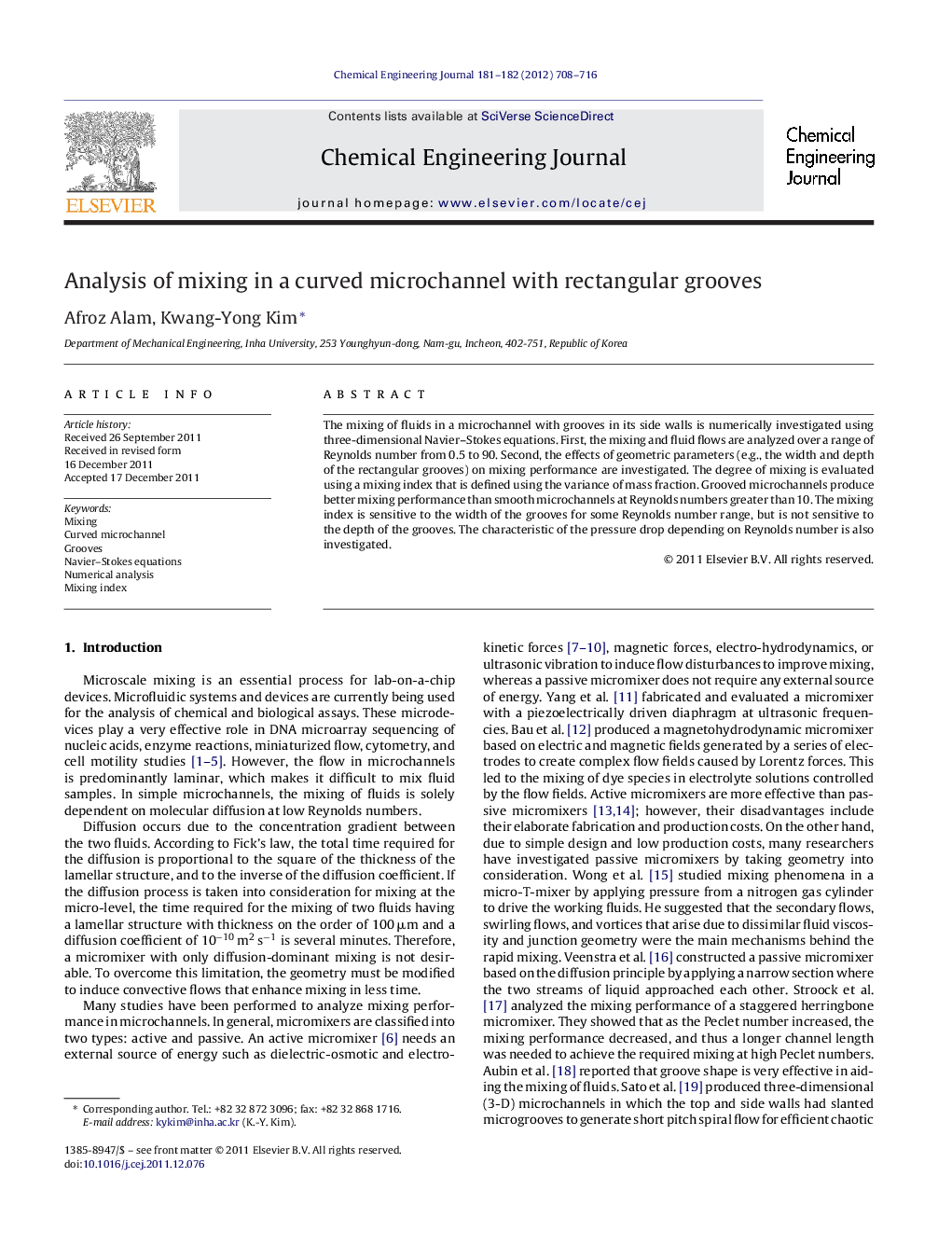| Article ID | Journal | Published Year | Pages | File Type |
|---|---|---|---|---|
| 150254 | Chemical Engineering Journal | 2012 | 9 Pages |
The mixing of fluids in a microchannel with grooves in its side walls is numerically investigated using three-dimensional Navier–Stokes equations. First, the mixing and fluid flows are analyzed over a range of Reynolds number from 0.5 to 90. Second, the effects of geometric parameters (e.g., the width and depth of the rectangular grooves) on mixing performance are investigated. The degree of mixing is evaluated using a mixing index that is defined using the variance of mass fraction. Grooved microchannels produce better mixing performance than smooth microchannels at Reynolds numbers greater than 10. The mixing index is sensitive to the width of the grooves for some Reynolds number range, but is not sensitive to the depth of the grooves. The characteristic of the pressure drop depending on Reynolds number is also investigated.
► Numerical analysis of mixing in a curved microchannel with grooves in the side walls. ► Maximum enhancement of the mixing index occurred at Re = 30 compared to the smooth channel. ► Both of the smooth and grooved microchannels showed a similar pressure drop. ► Mixing index improved with the increase in groove width for Re = 15–45. ► Effect of groove depth on the mixing index was very small for all Reynolds numbers.
